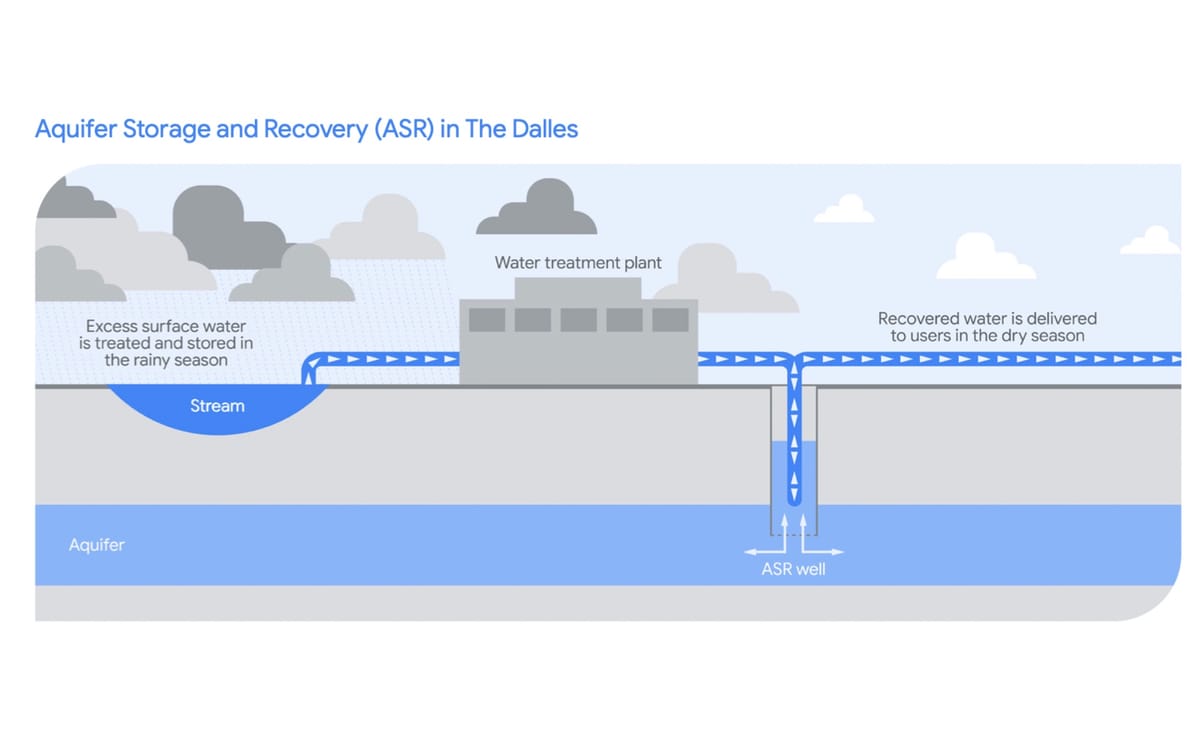Report on Wastewater Permit Approval in Bexar County and its Implications for Sustainable Development Goals
1.0 Introduction: Development Permit Conflicts with Sustainability Objectives
The Texas Commission of Environmental Quality (TCEQ) has approved a wastewater discharge permit for the Guajalote Ranch residential development in Northwest Bexar County. This decision has been met with significant opposition from residents and environmental groups, who have been contesting the project for three years. The conflict highlights a critical tension between urban development and the achievement of several key United Nations Sustainable Development Goals (SDGs), particularly those concerning clean water, sustainable communities, and the protection of ecosystems.
2.0 Impact on Clean Water and Sanitation (SDG 6)
The primary concern revolves around the direct threat to water resources, a core component of SDG 6: Clean Water and Sanitation. The permit authorizes the discharge of treated wastewater into the local water system, which poses a risk to the region’s primary drinking water source.
- Permit Details: The approved permit allows the new wastewater treatment plant to discharge up to one million gallons of effluent per day.
- Point of Discharge: The effluent will be released into a dry creek bed that is part of the upper Helotes Creek, which directly recharges the Edwards Aquifer.
- Threat to Drinking Water: Hydrologists and environmental advocates assert that this discharge will inevitably end up in the Edwards Aquifer, the source of drinking water for over one million people. This raises concerns about the long-term degradation of water quality and safety, challenging the goal of ensuring access to safe and affordable drinking water for all.
3.0 Sustainable Cities and Terrestrial Ecosystems (SDG 11 & SDG 15)
The Guajalote Ranch project, proposed by Lennar Homes, aims to address housing needs by adding thousands of new homes. However, its location and environmental impact are in direct conflict with principles of sustainable urban planning and ecosystem preservation as outlined in SDG 11: Sustainable Cities and Communities and SDG 15: Life on Land.
- Inappropriate Land Use: Opponents, including the Greater Edwards Aquifer Alliance, argue that the scale and type of development are inconsistent with the existing land uses and environmentally sensitive nature of the area. This challenges the SDG 11 target of inclusive and sustainable urbanization.
- Endangered Natural Resource: The Edwards Aquifer is described as an “endangered resource.” The development’s impact on its recharge zone threatens the health of this vital terrestrial ecosystem, undermining the objectives of SDG 15 to protect and restore freshwater ecosystems and halt biodiversity loss.
- Degradation of Natural Heritage: The potential contamination of the aquifer represents a degradation of the region’s natural heritage, which sustainable development practices aim to safeguard.
4.0 Institutional Accountability and Justice (SDG 16)
The dispute calls into question the effectiveness of regulatory frameworks and institutions responsible for environmental protection, a key aspect of SDG 16: Peace, Justice and Strong Institutions.
- Regulatory Stance: The TCEQ chair stated that the agency’s evaluation found the permit to be protective and in compliance with all applicable requirements.
- Advocates’ Position: Environmental groups and local experts contend that the current rules are not sufficiently protective of the Edwards Aquifer. They are advocating for stronger, more effective regulations and have expressed their intent to challenge the TCEQ’s decision in district court.
- Call for Institutional Reform: The ongoing fight for new rules reflects a citizen-led demand for more accountable and transparent institutions that prioritize the long-term environmental health and well-being of the community.
Analysis of Sustainable Development Goals in the Article
1. Which SDGs are addressed or connected to the issues highlighted in the article?
- SDG 6: Clean Water and Sanitation: This is the most prominent SDG in the article. The entire conflict revolves around the potential contamination of the Edwards Aquifer, a primary source of drinking water, due to the discharge of wastewater effluent. The core issue is the protection of water quality and water-related ecosystems.
- SDG 11: Sustainable Cities and Communities: The article mentions that the wastewater plant is being built to service the “Guajalote Ranch development by Lennar Homes,” which is “expected to bring thousands of new homes to the area.” This directly links the issue to urban development, housing, and the environmental impact of expanding communities.
- SDG 3: Good Health and Well-being: The potential for wastewater to end up in the drinking water supply for “more than a million people” directly implies a risk to public health. Contaminated drinking water can lead to various illnesses, connecting the issue to health and well-being.
- SDG 15: Life on Land: The article discusses the discharge of effluent into a “dry creek bed [in] the upper reach of Helotes Creek” and the potential degradation of the Edwards Aquifer. The aquifer is a critical inland freshwater ecosystem, and protecting it falls under the scope of SDG 15.
- SDG 16: Peace, Justice and Strong Institutions: The article details a three-year-long fight by citizens and advocacy groups like the Greater Edwards Aquifer Alliance against a decision made by a state agency, the Texas Commission of Environmental Quality (TCEQ). The advocates’ call for “changes to TCEQ’s policies” and their belief that the current rules “are not sufficiently protective” highlight issues of environmental governance, public participation in decision-making, and the perceived responsiveness of institutions.
2. What specific targets under those SDGs can be identified based on the article’s content?
- Target 6.3: By 2030, improve water quality by reducing pollution. The central conflict is the opposition to a permit that allows the “discharge up to a million gallons of effluent from a wastewater facility, per day,” which activists fear will degrade the water quality of the Edwards Aquifer.
- Target 6.6: By 2020, protect and restore water-related ecosystems, including… aquifers. The explicit goal of the activists is to “protect the aquifer and nearby water systems.” Dr. Ronald Green calls the aquifer an “endangered resource” that will “suffer” unless actions are taken to protect it.
- Target 11.6: By 2030, reduce the adverse per capita environmental impact of cities, including… waste management. The wastewater treatment plant is a direct consequence of a large-scale housing development. The potential pollution from this plant represents a significant adverse environmental impact resulting from urban expansion.
- Target 3.9: By 2030, substantially reduce the number of deaths and illnesses from… water… pollution and contamination. The concern that the wastewater will “end up” in the drinking water for over a million people directly relates to preventing water contamination to protect human health.
- Target 15.1: By 2030, ensure the conservation… and sustainable use of… inland freshwater ecosystems and their services. The article frames the Edwards Aquifer as a vital natural resource whose quality and function are threatened by the development, impacting its sustainable use as a drinking water source.
- Target 16.7: Ensure responsive, inclusive, participatory and representative decision-making at all levels. The article describes a prolonged struggle where citizens have “been fighting the issuance of this permit for the last three years” against the TCEQ. Their plan to “contest the decision in district court” shows a breakdown in participatory decision-making and a lack of trust in the institution’s responsiveness to public concerns.
3. Are there any indicators mentioned or implied in the article that can be used to measure progress towards the identified targets?
- Volume of Treated Wastewater Discharged: The article explicitly states the permit allows for the “discharge up to a million gallons of effluent from a wastewater facility, per day.” This quantitative measure can serve as an indicator for Target 6.3, tracking the volume of potential pollutants being introduced into the environment.
- Water Quality of the Aquifer: While no specific chemical measurements are given, the article implies that the quality of the aquifer is a key metric. Dr. Green warns that “the recharge is degraded — the aquifer is going to be degraded” and that the project will “change the water as we know it.” An implied indicator would be the measured levels of contaminants or changes in the chemical composition of the Edwards Aquifer water, relevant to Targets 6.3, 6.6, and 15.1.
- Effectiveness of Environmental Regulations: The activists’ call to “create new rules” because they “do not believe that those rules are sufficiently protective” implies an indicator related to the strength and enforcement of environmental policies. The outcome of the legal challenge in district court could also serve as an indicator of institutional accountability and responsiveness (Target 16.7).
- Population Reliant on the Water Source: The article mentions that “more than a million people” rely on the aquifer. This number serves as an indicator of the scale of the population potentially affected by water quality degradation, relevant to assessing the risk under Target 3.9.
4. Summary Table of SDGs, Targets, and Indicators
| SDGs | Targets | Indicators |
|---|---|---|
| SDG 6: Clean Water and Sanitation | 6.3: Improve water quality by reducing pollution. 6.6: Protect and restore water-related ecosystems, including aquifers. |
Volume of wastewater effluent discharged per day (explicitly “up to a million gallons”). Quality of water in the Edwards Aquifer (implied by statements that the water will be “degraded”). |
| SDG 11: Sustainable Cities and Communities | 11.6: Reduce the adverse per capita environmental impact of cities. | Volume of wastewater generated by new housing developments. |
| SDG 3: Good Health and Well-being | 3.9: Substantially reduce illnesses from water pollution and contamination. | Number of people reliant on the potentially contaminated water source (explicitly “more than a million people”). |
| SDG 15: Life on Land | 15.1: Ensure the conservation and sustainable use of inland freshwater ecosystems. | State of the Edwards Aquifer ecosystem (implied by calling it an “endangered resource”). |
| SDG 16: Peace, Justice and Strong Institutions | 16.7: Ensure responsive, inclusive, and participatory decision-making. | Number and duration of public challenges to institutional decisions (explicitly a “three year” fight and a planned court case). Status of environmental regulations (implied by the call to “create new rules”). |
Source: news4sanantonio.com







